
Royalty free HD Battle of the Bulge photos | Pikrepo
Author: Jim Bishop
Recently, players have posted questions surrounding Moving, Motion, Starting, Stopping and how these interact with C6 Target-Based To Hit DRM. These questions appear cyclically and I can recall answering them for as long as I have played ASL. Much of the information in this article appeared in Ole Boe’s Stop and Go Traffic article which originally appeared in the ‘96 ASL Annual. These old Annuals are available as PDF files or can be picked up used, through all the usual outlets. I highly recommend you read the original as it is still informative but for those who can’t, I offer this summary of that article here.
Moving and Vehicular Target:
To properly apply all the DRM it is important to first understand the difference between Moving and Moving Vehicular Target. Moving Vehicular Target, sometimes referred to as Moving Target, is defined in C.8. Any vehicle currently in Motion is a Moving Vehicular Target. In addition, any vehicle which starts ITS MPh in Motion, has entered a new hex, or bypassed a new hexside in its current hex during ITS MPh is a Moving Vehicular Target during Defensive First Fire or Final Fire. The key here is the vehicle either started in Motion or has moved to some new position on the board.
Moving is slightly harder. Not only is it not defined in the Index, it is never well defined in the ASLRB. In ASL, Moving means the unit is currently conducting ITS MPh. There can only ever be ONE moving thing. That thing can be a single unit, multiple units moving as a stack, a Human Wave or some other Impulse-based movement, etc. The unit or units actively spending MFs/MPs are Moving regardless of how many units are doing it or if they successfully use the MF/MP(e.g., failed Smoke Attempt DR/dr). Even though Moving, a unit which doesn’t spend MP/MF’s cannot be fired upon unless they actually spend the MP/MF. The closest the ASLRB comes to stating this is in A8.1: “… The portion occurring during the enemy MPh is called Defensive First Fire and can be used only vs a moving unit(s)…” It would eliminate a lot of player confusion if such a key concept was in the Index.
Stopped and Non-Stopped:
The Index defines a Non-Stopped vehicle as one which has not expended a Stop Movement Point (MP) since its last Start MP expenditure during ITS MPh. This should sound a lot like the earlier definition of Moving. That’s because it is. A vehicle can only ever be Stopped or Non-Stopped while it is conducting ITS MPh, i.e., Moving as defined earlier. Knowing what Non-Stopped is, we can surmise a Stopped vehicle is one which has spent a Stop MP or somehow become Immobilized/Bogged while Moving. This is covered in C.8.
Motion Status:
A Moving vehicle, i.e., one conducting ITS MPh, cannot be in Motion status. It is either Stopped or Non-Stopped. A vehicle which ends ITS MPh without spending a Stop MP is covered with a Motion counter to reflect its Motion status and is treated as a Moving Vehicular Target. A vehicle which begins ITS MPh covered with a Motion counter has the counter removed and the begins ITS MPh as a Non-Stopped, Moving Vehicular Target. A vehicle not covered with a Motion counter begins ITS MPh as a Stopped, non-Moving Vehicular Target.
From all of this, it should be clear a vehicle can be Stopped but still qualify as a Moving Vehicular Target. Conversely, it is possible a vehicle can be Non-Stopped and not qualify as a Moving Vehicular Target. A vehicle under a Motion counter is ALWAYS a Moving Vehicular Target. In all cases, Moving, Moving Vehicular Target, Motion, and Stopped/Non-Stopped represent different states. Understanding those states along with a careful perusal of the various charts will make it easier to correctly apply DRM when the time comes.
With this as background, we are ready to explore how all these rules interact and how they are properly applied. Knowing the correct application of these DRM is among the first steps to better combined arms and AFV play. Onward.
EX 1: An AFV begins ITS MPh NOT in Motion and spends 1 MP to Start. This AFV is now conducting ITS MPh (i.e., it is Moving). Since it spent a Start MP it is now Non-Stopped but not yet a Moving Vehicular Target. Looking at the C6 Target-Based TH DRM Table, we see Case L would be NA (the AFV is a Non-Stopped target). Additionally, Case J would be NA (the AFV does not qualify as a Moving Vehicular Target). For the purposes of CC Reaction Fire or CC, the AFV is Non-Stopped so a +2 DRM would apply (A11.51). If the AFV survives all in-coming fire on the Start MP, it may enter a new hex or bypass a new hexside. Once it has done this, it qualifies as a Moving Vehicular Target, but not before. This has some serious implications. If you start for 1 MP and change the VCA 2 hexspines before entering a new hex or hexside, that would be three potential shots before Case J DRM applied.
EX 2: An AFV begins ITS MPh in Motion. As it is conducting ITS MPh, the Motion counter would come off and the AFV is considered Non-Stopped and Moving (i.e., conducting \ITS MPh). All fire against it during Defensive First Fire and Final Fire suffer Case J DRM. If it spends 1 MP to Stop, it becomes a Stopped vehicle but would still be considered a Moving Vehicular Target. As such, Case J DRMs would still apply but Case L could now also apply making it possible for an AFV to be both Point Blank and a Moving Vehicular Target. Also, once the AFV becomes Stopped, there is no +2 DRM in CC/CC Reaction Fire against that AFV even though it is still considered a Moving Vehicular Target.
EX 4: This is an extension of EX 2. The AFV survives all fire on the Start MP and moves 3 MP to a hex adjacent to an enemy AFV. Surviving all incoming fire, the AFV Stops for 1 MP. The enemy AFV could shoot at the Moving AFV. If it does so, it would pay +2 Case J but also qualify for a -2 Case L since the Moving AFV is now Stopped having spent a Stop MP.
I have not covered Motion attempts in this briefing but from the last few examples you should be able to extrapolate how powerful it can be to save your AFV. If an AFV is being attacked by an enemy, making a successful Motion attempt instantly qualifies your AFV for Case J and negates any potential for Case L, a +4 DRM in favor of survival. Combine this with a free CA change as part of the Motion Attempt and you can point your thickest armor to the threat. In your friendly fire phase, freely change your VCA to point in a direction where cover is hopefully available, saving the AFV from destruction.
I hope this brief article is useful and if you find any errors, please let me know and I will correct them. Thanks and go read Stop and Go Traffic. It’s worth your time. — jim
(Carried with Jim Bishop’s permission)
Original posted here : https://jekl.com/2021/09/09/stop-and-go-traffic-a-synopsis/
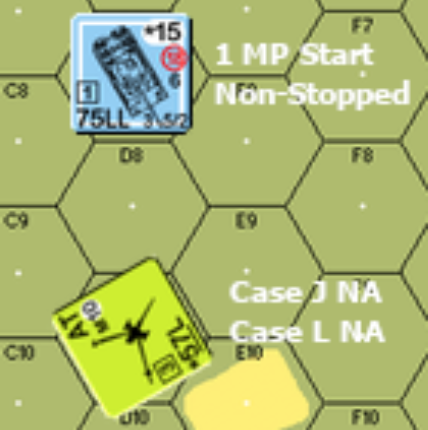
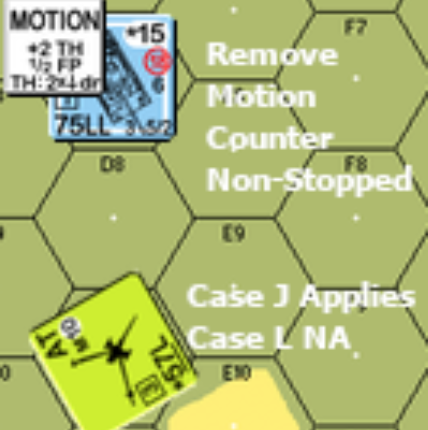
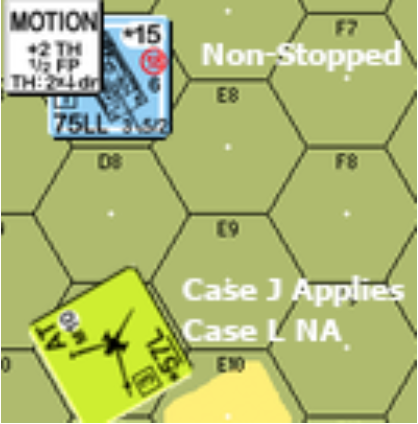
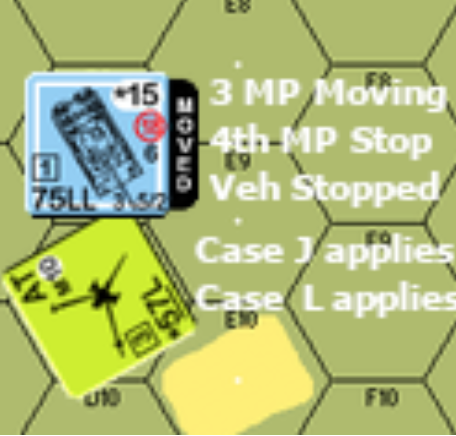
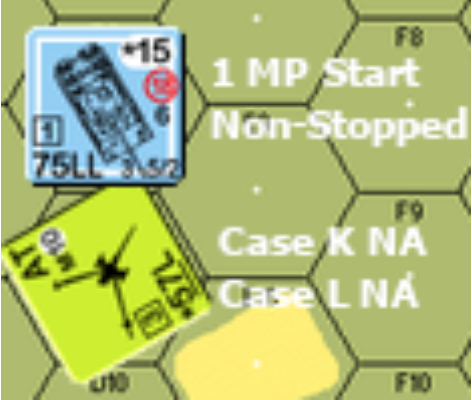
Hey everyone, please let me know if there are comments on this article, particularly if I have made a mistake. I get these reviewed pretty extensively but errors can and will creep in. More importantly, if there is a topic you would like to see me tackle, please let me know. I have three more topics in some semblance of completion. I hope you find these helpful. — jim
Pingback: Hello ASL world! – The Bishop Says
Good summary with all the various implications.
The one I had missed was STARTING is a good way to minimize CC Reaction Fire after the enemy jumped into your hex.
Glad you found the article useful.